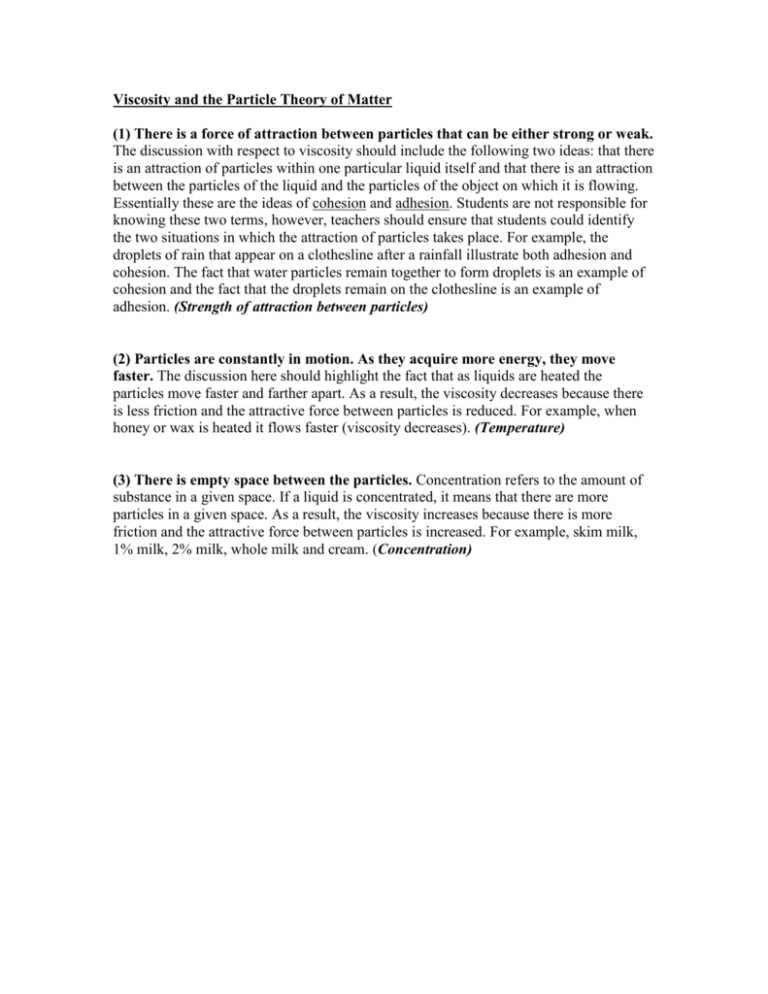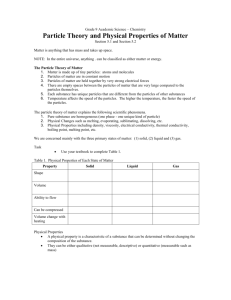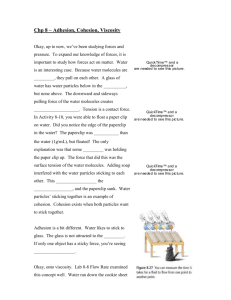Viscosity and the Particle Theory of Matter
advertisement

Viscosity and the Particle Theory of Matter (1) There is a force of attraction between particles that can be either strong or weak. The discussion with respect to viscosity should include the following two ideas: that there is an attraction of particles within one particular liquid itself and that there is an attraction between the particles of the liquid and the particles of the object on which it is flowing. Essentially these are the ideas of cohesion and adhesion. Students are not responsible for knowing these two terms, however, teachers should ensure that students could identify the two situations in which the attraction of particles takes place. For example, the droplets of rain that appear on a clothesline after a rainfall illustrate both adhesion and cohesion. The fact that water particles remain together to form droplets is an example of cohesion and the fact that the droplets remain on the clothesline is an example of adhesion. (Strength of attraction between particles) (2) Particles are constantly in motion. As they acquire more energy, they move faster. The discussion here should highlight the fact that as liquids are heated the particles move faster and farther apart. As a result, the viscosity decreases because there is less friction and the attractive force between particles is reduced. For example, when honey or wax is heated it flows faster (viscosity decreases). (Temperature) (3) There is empty space between the particles. Concentration refers to the amount of substance in a given space. If a liquid is concentrated, it means that there are more particles in a given space. As a result, the viscosity increases because there is more friction and the attractive force between particles is increased. For example, skim milk, 1% milk, 2% milk, whole milk and cream. (Concentration)











